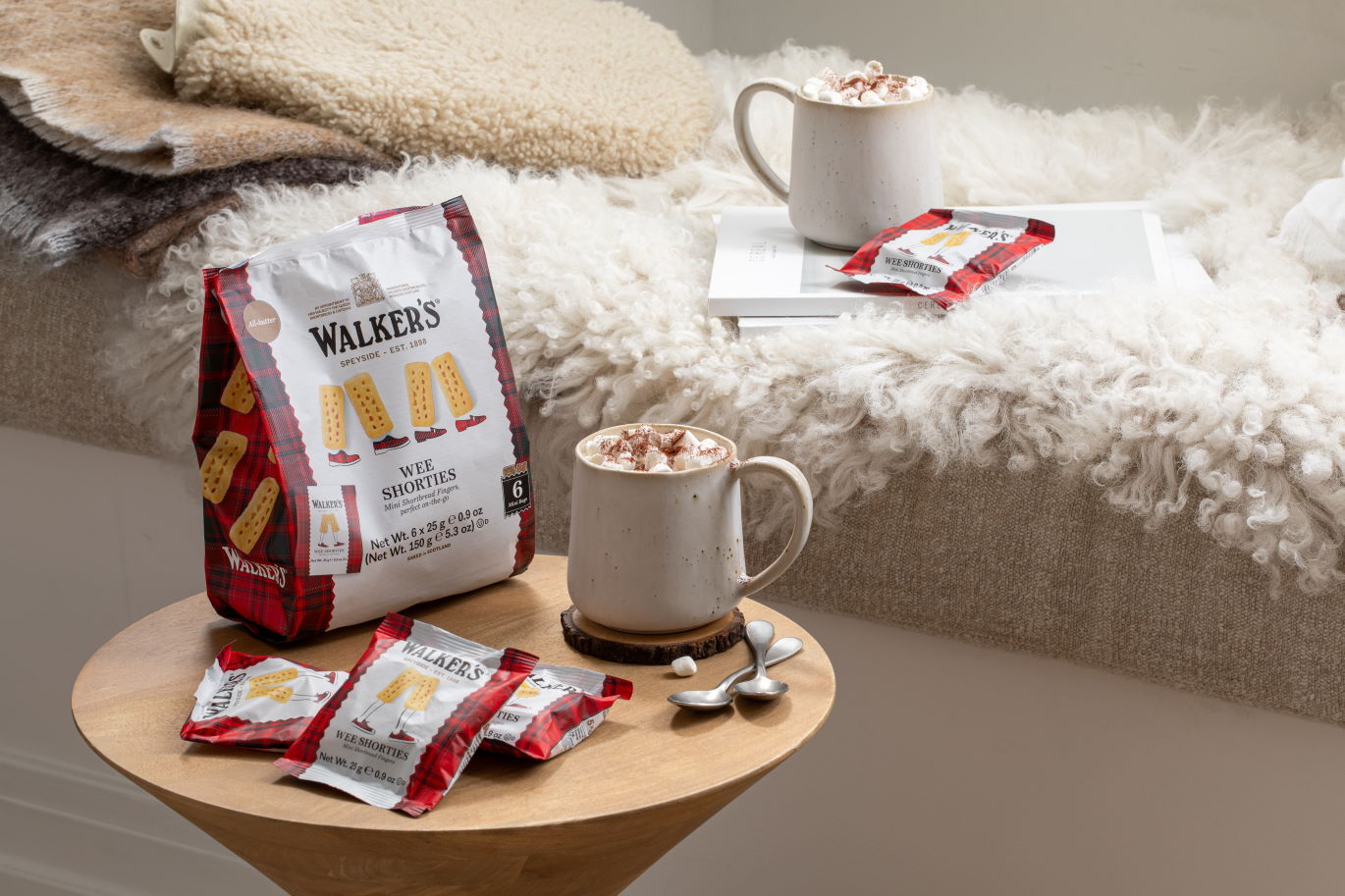National Shortbread Day: Fun Facts
Posted by Michael Mortimer on 19th Dec 2015
National Shortbread Day is celebrated worldwide on January 6th. Can you imagine anything better than a day dedicated to shortbread? The Scottish classic, which has been baked to perfection in our Aberlour bakeries since 1898, truly deserves this day of celebration. There is nothing more wonderful than the crumbly texture of a shortbread melting in your mouth, accompanied by a cup of tea or coffee, a cold glass of milk or maybe a wee tipple of whisky for the ultimate Scottish treat. Shortbread is one of Scotland’s main contributions to the culinary scene, and we wanted to tell you a bit more about National Shortbread Day!
Celebrating the Scottish speciality
National Shortbread Day was first celebrated in America, and has become a food holiday worth celebrating across the UK, US and around the world. Most people mark the day by treating themselves to some traditional shortbread, like the very popular Shortbread Fingers, but on a day like the National Shortbread Day it is worth branching out and trying some new favourites. How about vanilla shortbread, some chocolate shortbread rings or our Homebake Triangles for that real home-made feel? We also have fun novelty shortbread, a selection of affordable everyday packets and a wide range of 100% Gluten Free Shortbread, giving you all of the taste with none of the gluten.

History of the shortbread
When Joseph Walker opened his first bakery in 1898 and started the Walkers adventure, shortbread had already been baked in Scotland for centuries. The history of shortbread is long and interesting. It is a descendant from the Scottish twice-baked biscuit, shortbread has been around from the 12th century. A version similar to what we have today is credited to bakers serving at the court of Mary, Queen of Scots in the 16th century, refining the shortbread recipe to a delicious taste which was very popular with the queen and the people alike. Making shortbread was expensive, with high quality flour, butter and sugar as the main ingredients. It was usually only served at important occasions, like Christmas, Hogmanay, weddings and christenings. Shortbread got its name from the short, crumbly texture which melts in the mouth. This is due to the pure butter, which adds a full flavour to traditional shortbread as well as to gluten free shortbread. Today, Scotland is still known as the home of shortbread, and Walkers have been making The World’s Finest Shortbread since the humble beginnings over 100 years ago. We have seen plenty of innovation in the last 117 years of Walkers history, both in production, packaging and distribution – but the taste and texture remains the same.
Shortbread tradition
 Traditional shortbread comes in either rounds, fingers or “petticoat tails” – delicate triangles cut from a larger circle, made to resemble the petticoats which medieval ladies, like Mary Queen of Scots would have worn. The larger circle shape was the most common historical form, and is said to represent the sun. Shortbread fingers and petticoat tails are usually pricked to let steam escape, while the rounds are thinner and do not need this. There is also the Walkers exclusive Highlanders shortbread, which is hand-rolled in Demerara sugar to create extra crunch and texture. These unique, old-fashioned shortbreads are very popular still, and also come in a beautiful shortbread tin decorated with a traditional Highlander outfit. In some parts of Scotland, especially Shetland and Orkney, it has been traditional to break a shortbread over the head of a new bride, to symbolise prosperity and good fortune. A tasty treat of shortbread is still considered an occasion, but we can now enjoy them every day.
Traditional shortbread comes in either rounds, fingers or “petticoat tails” – delicate triangles cut from a larger circle, made to resemble the petticoats which medieval ladies, like Mary Queen of Scots would have worn. The larger circle shape was the most common historical form, and is said to represent the sun. Shortbread fingers and petticoat tails are usually pricked to let steam escape, while the rounds are thinner and do not need this. There is also the Walkers exclusive Highlanders shortbread, which is hand-rolled in Demerara sugar to create extra crunch and texture. These unique, old-fashioned shortbreads are very popular still, and also come in a beautiful shortbread tin decorated with a traditional Highlander outfit. In some parts of Scotland, especially Shetland and Orkney, it has been traditional to break a shortbread over the head of a new bride, to symbolise prosperity and good fortune. A tasty treat of shortbread is still considered an occasion, but we can now enjoy them every day.
Happy National Shortbread Day from all of us at Walkers, makers of The World’s Finest Shortbread!
 UK
UK US
US
